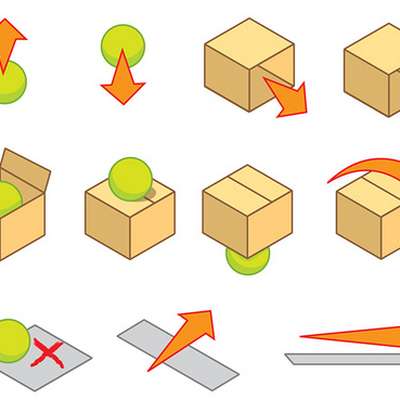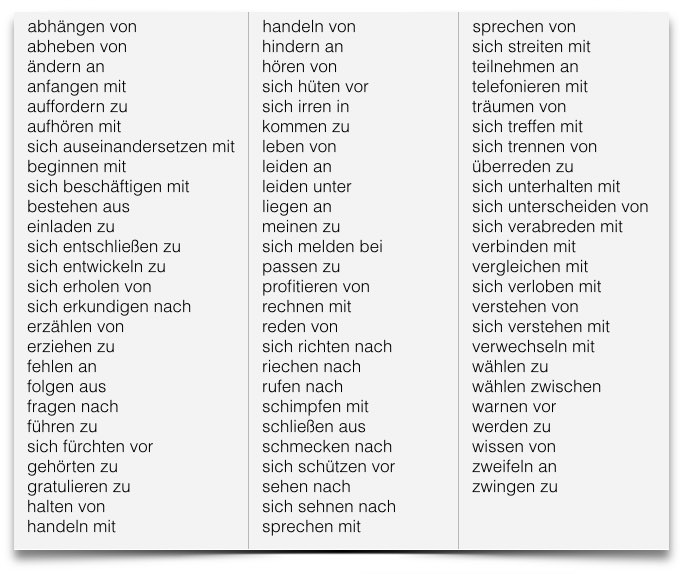

The dative is used for movement too … sometimes

Here we DO use the accusative precisely because there’s a change in position - a movement from point A (somewhere outside the garden) to point B (within the garden). Why? Because the children are moving, yes, but while staying within the same location (the garden).Ĭompare that with Die Kinder laufen in den Garten But we see the dative being used ( im Garten), not the accusative.

The verb laufen obviously deals with movement. The accusative is NOT simply used whenever there is movement (in a general sense). The distinction of movement from A to B (or change of position) is important. The two-way preposition used here is auf (on ).ĭo you see how the process of setting the glass on the table involves a change of position (or movement) from point A to point B? But once the glass is there ( static position) we use the dative. Ich setze das Glas auf den Tisch (acc.) vs.
EASY GERMAN GRAMMAR PREPOSITIONS HOW TO
Learn all that, you and you’ll know how to pick out the correct declensions for the right words every time! Are you ready to use two-way prepositions like a pro? Accusative vs. declension types (strong or weak) & patterns (there are 4) to choose between.which words in a prepositional phrase need declensions in the first place.which declensions (Then, in order to use a two-way preposition, you have to also know how to ‘signal’ which case your prepositional phrase is in, which is a matter of … It’s easiest to remember the difference as a direction (acc.) vs. There are some pretty simple guidelines for when to use a two-way preposition in the accusative vs. Gotcha covered! Keep reading! When & How To Use Two-way Prepositions That list in and of itself doesn’t seem so bad!īut the trickier part is knowing when to use these two-way prepositions with a noun in the accusative case and when to use them with a noun in the dative.Īnd then, of course, the vital question: how do you put a noun ‘into a case’ (<– and what does that mean anyway)? The 10 German two-way prepositions with some ‘starter’ English translations for you are: Two-Way Prepositions, specifically are used to indicate… Prepositions in general are important little words such as with, for, under, over, to, etc. how to use two-way prepositions idiomatically.

how to use the accusative or dative cases with two-way prepositions.what the 10 German two-way prepositions are.For more info on our work, visit: brief overview of how prepositions work in English vs. This app was developed by the students and faculty of the Mobile Language Learning Group at the University of Minnesota Duluth. By accessing grammar content at a comfortable pace, students can continue to have fun learning German! This application was intentionally developed to avoid overwhelming students with too much content too quickly. Mobile computing, and applications like this one, can allow students from many different backgrounds and skill levels to access grammar content at a pace appropriate for them. This brief introduction to German grammar has been designed to provide a quick reference and a short summary of major grammar topics, with maximal ease of use.Īiding Students at each Level of Language Proficiency This Grammar Guide will help you acquire new content and negotiate the highly structured German language, by allowing you to explicitly focusing on those structures that will help you communicate. Learning German and communicating in German is your primary focus, and grammar is merely a helpful tool. A descriptive grammar, like this one, can help in the process of learning the language. Languages are complex, and learning the grammar of a language can amount to a daunting and even sometimes overwhelming task. If you're new to learning German, there is a Guided View that will introduce you to different grammar topics at a comfortable pace. If you're an advanced learner, you will be able to access grammar tables, and quickly reference relevant grammar content using the Quick View. Language learners at different levels of proficiency can access grammar content at the pace that is right for them. The German Grammar Guide, developed by the Mobile Language Learning Group at the University of Minnesota Duluth, will help you learn the German language by providing two different and effective ways of accessing and learning about the structure of the German language.


 0 kommentar(er)
0 kommentar(er)
